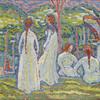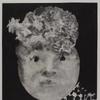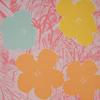Sheer Pleasure – Frank Brangwyn and the Art of Japan
- LONDON, United Kingdom
- /
- February 14, 2017
The year 2017 marks the 150th anniversary of the English artist and William Morris apprentice Frank Brangwyn RA (1867-1956). In the UK, the William Morris Gallery's exhibition Sheer Pleasure – Frank Brangwyn and the Art of Japan (through May 14) examines Brangwyn's love of Japanese art and his collaborative relationships with Japanese artists and patrons.
Brangwyn donated his collection of Japanese prints and paintings to the William Morris Gallery. These works have rarely been displayed and the exhibition includes highlights such as woodblock prints by Utagawa Hiroshige and Katsushika Hokusai and a carefully restored decorative screen.
During the 1910s, Brangwyn met the Japanese artist Yoshijiro Urushibara (1888-1953) in London. Their meeting led to a remarkable example of collaborative printmaking, combining the exuberant bravado of Brangwyn's designs with the subtle and distinctive techniques of Japanese printmaking. The exhibition explores the collaborative process with sketches, notes and key block prints, as well as displaying some of their most successful works, such as The Devil’s Bridge and the ambitious Bruges series. It also tells the story of Brangwyn’s relationship with his patron Kojiro Mutsakata, and their ill-fated plans to create an art gallery in Tokyo.
To complement the exhibition the gallery has invited painter and printmaker Rebecca Salter RA to display her work. Having studied at Kyoto City University of the Arts, and having lived in Japan for six years, Salter studied the art of Japanese woodblock printing extensively. She creates prints in collaboration with the Sato Woodblock Workshop in Kyoto, one of just a few surviving in an industry in slow decline. Salter’s work offers scope to compare the complexities of collaboration between designer and maker, artist and patron, Britain and Japan.
















